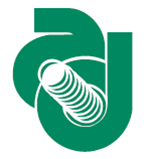Speaker
Dr
Erik Ramberg
(Fermilab)
Description
We present a study of micro-channel plate photomultipliers (MCP-PMT) as the active element of an electromagnetic shower maximum (SM) detector. Results for Photek 240 and Photonis XP85011 MCP-PMT devices were obtained at the Fermilab Test Beam Facility. The time resolutions obtained for this new type of SM detector is at the level of ~12 ps for Photek 240 and ~27 ps for Photonis XP85011 with individual pixel readout. The MCP-PMT showed essentially 100% efficiency for shower detection. No significant dependence of the time resolution on the absorber thickness was observed. We also performed tests where the photocathode was reverse biased, showing that the micro-channel plate alone works as a SM detector and gives 40 ps time resolution.
Summary
This research is aimed at providing a detector that gives robust timing measurement for electromagnetic showers. This is especially useful for disentangling shower pileup in a high luminosity machine. The MCP-PMT technology is being developed aggressively through the LAPPD project (Large Area Picosecond Photo Detector) and that project aims to provide cost effective large area MCP's using atomic layer deposition. An interesting result from this research is that the MCP itself, without a photocathode, can still act as a highly efficient, very fast shower detector.
Author
Dr
Erik Ramberg
(Fermilab)
Co-authors
Dr
Anatoly Ronzhin
(Fermilab)
Artur Apresyan
(California Institute of Technology)
Dr
Heejong Kim
(University of Chicago)
Dr
Maria Spiropulu
(CalTech)
Dr
Sergey Los
(Fermilab)
Dr
Si Xie
(CalTech University)

